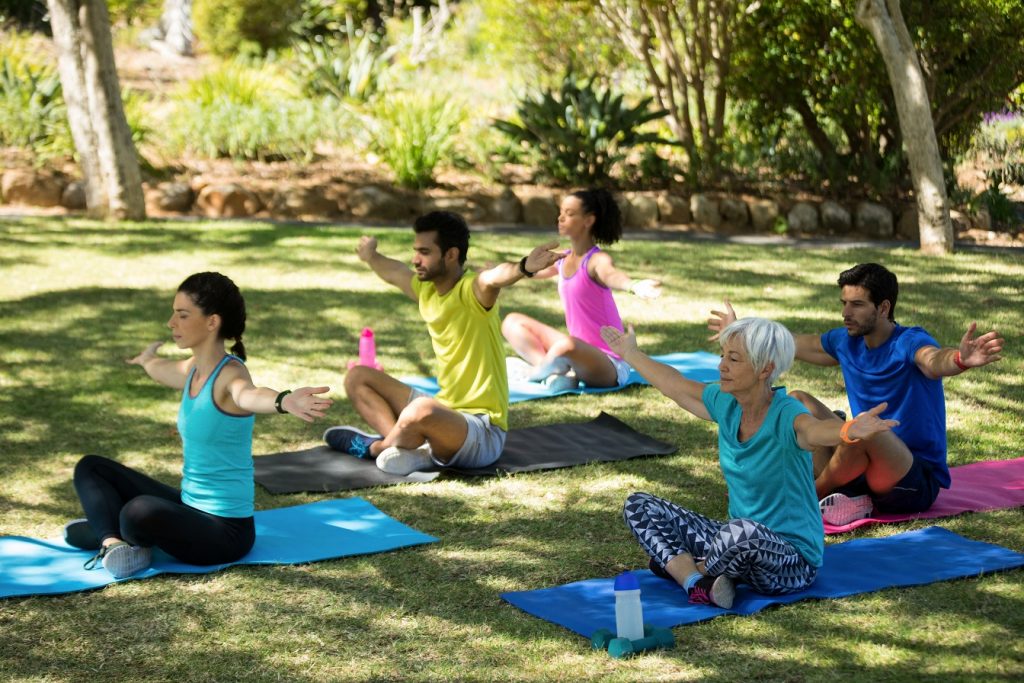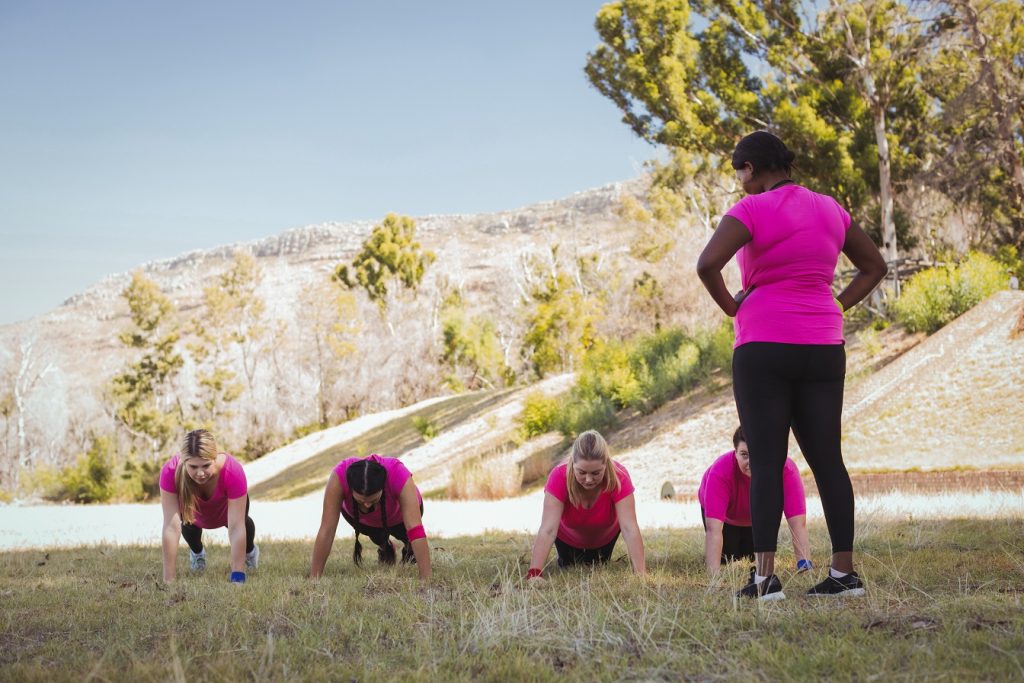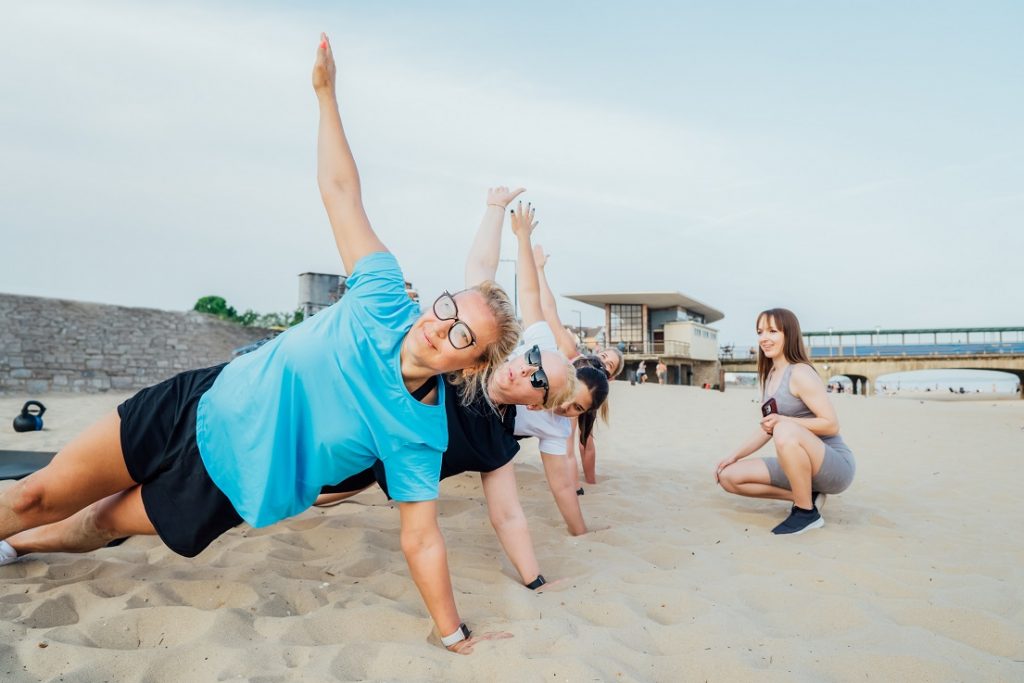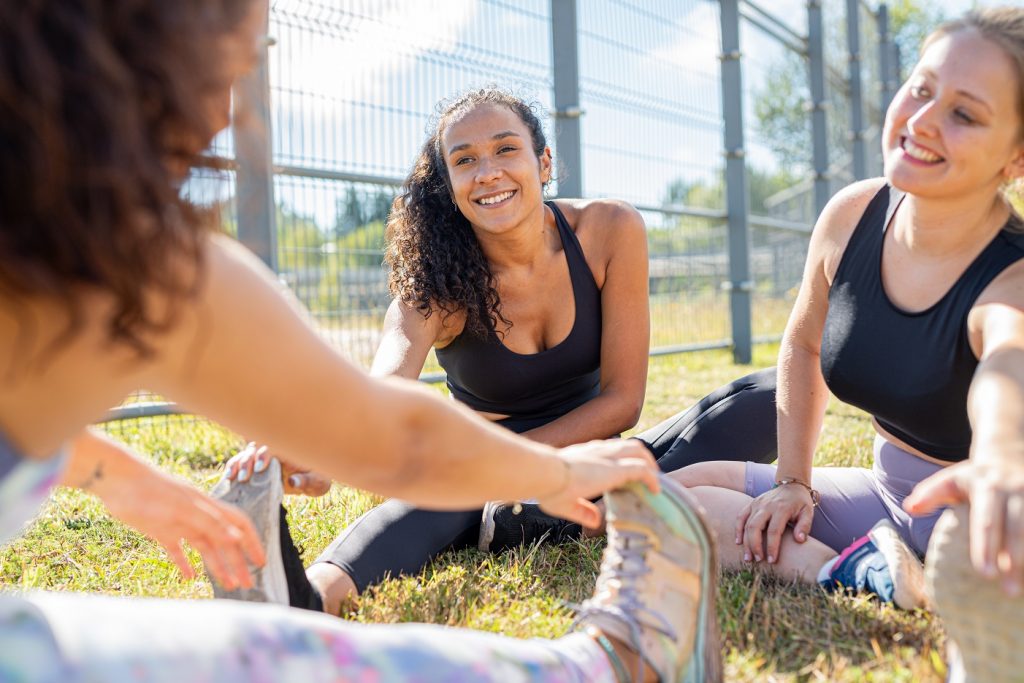Outdoor Workout Ideas for Active Women
Enjoying the outdoors is more appealing than ever. For women looking to break free from the monotony of indoor workouts, outdoor exercise offers a refreshing alternative. In this article, we’ll explore a variety of fun and effective outdoor workout options tailored specifically for active women.
Table of Contents:
- Hiking: Explore Nature While Getting Fit
- Cycling: Pedal Your Way to Fitness
- Outdoor Yoga: Find Your Zen in Nature
- Circuit Training in the Park: Total Body Workout
- Beach Workouts: Sand, Sun, and Sweat
- Safety Tips for Outdoor Exercise

Hiking: Explore Nature While Getting Fit
Hiking not only provides an excellent cardiovascular workout but also allows women to immerse themselves in the beauty of nature. Trails of varying difficulty levels cater to hikers of all fitness levels, making it an inclusive activity. Whether it’s a leisurely stroll through scenic landscapes or a challenging ascent up rugged terrain, hiking offers a full-body workout while rejuvenating the mind and soul.
Pros of Hiking:
- Physical Exercise: Hiking provides a full-body workout, engaging muscles in the legs, core, and upper body while improving cardiovascular health.
- Scenic Views: Hiking trails offer stunning views of nature, providing opportunities for relaxation, inspiration, and connection with the outdoors.
- Mental Health Benefits: Spending time in nature reduces stress, anxiety, and depression, promoting mental well-being and clarity of mind.
- Customizable Difficulty: Hiking trails come in various difficulty levels, catering to beginners and seasoned hikers alike, with options for leisurely walks or challenging climbs.
- Exploration: Hiking allows you to explore diverse ecosystems, discover hidden gems, and connect with the natural world in a meaningful way.
Cons of Hiking:
- Physical Demands: Hiking can be physically demanding, requiring endurance, strength, and stamina, especially on steep or rugged terrain.
- Weather Risks: Hikers are exposed to weather conditions such as rain, wind, heat, or cold, which can pose safety risks or discomfort during the hike.
- Trail Hazards: Trails may have hazards such as loose rocks, tree roots, or wildlife encounters, increasing the risk of slips, trips, or injuries.
- Navigation Challenges: Hiking trails may be poorly marked or lack signage, leading to navigation challenges or the risk of getting lost, especially in unfamiliar terrain.
- Equipment Needs: Hiking requires appropriate gear such as sturdy footwear, weather-appropriate clothing, hydration packs, and navigation tools, which can be costly or require prior investment.

Cycling: Pedal Your Way to Fitness
Cycling is a low-impact exercise that offers numerous health benefits, including improved cardiovascular fitness and leg strength. Women can enjoy cycling solo or join group rides for added motivation and camaraderie. Whether exploring urban bike paths or tackling scenic routes in the countryside, cycling provides an exhilarating outdoor workout experience.
Pros of Cycling:
- Cardiovascular Exercise: Cycling is an excellent cardiovascular workout, improving heart health, lung capacity, and overall fitness levels.
- Low Impact: Cycling is gentle on the joints, making it suitable for individuals with joint issues or those recovering from injuries.
- Efficient Transportation: Cycling can serve as an eco-friendly and cost-effective mode of transportation, reducing carbon footprint and traffic congestion.
- Versatility: Cycling offers versatility in terrain and distance, with options for leisurely rides, challenging climbs, or long-distance cycling adventures.
- Enjoyment of Nature: Cycling allows riders to explore scenic routes, enjoy fresh air, and connect with nature while experiencing the thrill of speed and freedom.
Cons of Cycling:
- Safety Concerns: Cyclists are vulnerable to accidents and collisions with vehicles, pedestrians, or other cyclists, necessitating caution and adherence to safety guidelines.
- Weather Dependency: Cycling is weather-dependent, with rain, wind, or extreme temperatures posing challenges or discomfort during rides.
- Equipment Maintenance: Cycling requires regular maintenance of bicycles, including tire pressure, chain lubrication, and brake adjustments, which can be time-consuming or costly.
- Road Hazards: Roads may have hazards such as potholes, debris, or uneven surfaces, increasing the risk of accidents or injuries for cyclists.
- Physical Strain: Long-distance or intense cycling rides can lead to physical strain, fatigue, or overuse injuries, requiring proper hydration, nutrition, and recovery strategies.

Outdoor Yoga: Find Your Zen in Nature
Practicing yoga outdoors adds an extra dimension to the mind-body connection, allowing women to harmonize with their natural surroundings. From serene park settings to tranquil beachfronts, outdoor yoga sessions offer a peaceful escape from the stresses of daily life. Flowing through sun salutations or holding poses amidst the sounds of nature enhances mindfulness and promotes relaxation.
Pros of Doing Yoga Outdoors:
- Connection with Nature: Practicing yoga outdoors allows you to connect with the natural world, fostering a sense of peace and tranquility.
- Fresh Air: Breathing in fresh air during outdoor yoga sessions can enhance relaxation and deepen your breath awareness.
- Enhanced Mood: Sunlight and Vitamin D exposure during outdoor yoga can elevate mood and reduce stress levels.
- Spacious Environment: Outdoor spaces provide ample room for yoga poses and sequences, allowing for greater freedom of movement.
- Variety of Settings: Whether it’s a park, beach, or mountainside, outdoor yoga offers a variety of scenic settings to inspire your practice.
Cons of Doing Yoga Outdoors:
- Weather Dependency: Outdoor yoga sessions are susceptible to weather conditions such as rain, wind, or extreme temperatures, which may disrupt your practice.
- Distractions: Outdoor environments can be noisy or crowded, leading to distractions that may hinder focus and concentration during yoga practice.
- Uneven Surfaces: Unlike indoor studios, outdoor surfaces may be uneven or unstable, increasing the risk of slips, trips, or falls during yoga poses.
- Limited Amenities: Outdoor locations may lack amenities such as restroom facilities, changing rooms, or props typically found in indoor yoga studios.
- Pest Disturbance: Insects or pests present in outdoor environments may disrupt your yoga practice and cause discomfort.

Circuit Training in the Park: Total Body Workout
Parks provide the perfect backdrop for high-intensity circuit training workouts that combine strength, cardio, and flexibility exercises. Utilizing benches, stairs, and playground equipment, women can perform bodyweight exercises such as squats, push-ups, and lunges to sculpt and tone their bodies. Circuit training in the park offers a dynamic and efficient workout that can be tailored to individual fitness levels.
Pros of Circuit Training in the Park:
- Outdoor Environment: Circuit training in the park allows you to enjoy the benefits of exercising in nature, which can enhance mood, reduce stress, and increase motivation.
- Accessible Equipment: Parks often have benches, stairs, playgrounds, and other structures that can be used for a variety of exercises, providing versatility in workout routines.
- Fresh Air: Exercising outdoors provides access to fresh air, which can improve respiratory health and increase energy levels during workouts.
- Community Engagement: Circuit training in the park offers opportunities to connect with other fitness enthusiasts, creating a sense of camaraderie and accountability.
- Cost-Effective: Utilizing park amenities for circuit training is cost-effective compared to gym memberships or purchasing exercise equipment, making fitness accessible to all.
Cons of Circuit Training in the Park:
- Weather Dependency: Outdoor workouts are susceptible to weather conditions such as rain, extreme heat, or cold, which may disrupt or limit the effectiveness of circuit training sessions.
- Limited Equipment: Parks may have limited or inconsistent access to equipment, requiring improvisation or modification of exercises during circuit training sessions.
- Space Constraints: Popular parks may be crowded, limiting space for circuit training activities and causing distractions or interruptions.
- Uneven Surfaces: Park terrain may be uneven or unstable, increasing the risk of slips, trips, or falls during circuit training exercises.
- Safety Concerns: Exercising in parks may pose safety concerns such as inadequate lighting, uneven surfaces, or potential encounters with wildlife, necessitating caution and awareness during workouts.

Beach Workouts: Sand, Sun, and Sweat
The beach offers a unique environment for fitness enthusiasts to challenge themselves while enjoying the sun, sand, and sea. Running or walking on soft sand engages muscles not typically activated on solid ground, providing an effective lower-body workout. Additionally, water-based activities like swimming or paddleboarding offer a refreshing way to cool off while building strength and endurance.
Pros of Doing Beach Workouts:
- Scenic Setting: The beach provides a picturesque backdrop for workouts, enhancing motivation and enjoyment.
- Natural Resistance: Sand adds resistance to movements, increasing the intensity of workouts and challenging muscles.
- Low-Impact Exercise: Soft sand reduces impact on joints, making beach workouts suitable for individuals with joint issues or injuries.
- Fresh Air: Breathing in sea air can invigorate the body and mind, enhancing the overall workout experience.
- Variety of Activities: From running and swimming to bodyweight exercises and beach volleyball, the beach offers a wide range of workout options.
Cons of Doing Beach Workouts:
- Weather Factors: Beach workouts are subject to weather conditions like wind, rain, or extreme heat, which may disrupt or limit the workout.
- Uneven Surface: Walking or running on sand requires extra effort and may increase the risk of ankle or knee injuries due to the uneven surface.
- Potential Crowds: Popular beaches can be crowded, limiting space for workouts and causing distractions.
- Limited Equipment: Beaches typically lack gym equipment, requiring modifications or improvisation for certain exercises.
- Sun Exposure: Prolonged sun exposure without proper protection may lead to sunburn or heat-related issues during beach workouts.

Safety Tips for Outdoor Exercise
Before embarking on any outdoor workout, it’s essential to prioritize safety. This includes staying hydrated, wearing appropriate attire and footwear, applying sunscreen, and being mindful of weather conditions. Women should also inform someone of their workout plans and carry a fully charged phone for emergencies. By taking the necessary precautions, outdoor exercise can be both enjoyable and safe.
Conclusion
Embracing outdoor workouts allows active women to reap the physical, mental, and emotional benefits of exercise while immersing themselves in the beauty of nature. Whether hiking through scenic trails, cycling along picturesque routes, or practicing yoga amidst tranquil surroundings, the options for outdoor fitness are endless. By incorporating these activities into their routine, women can elevate their workout experience and enhance their overall well-being.
